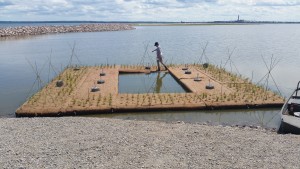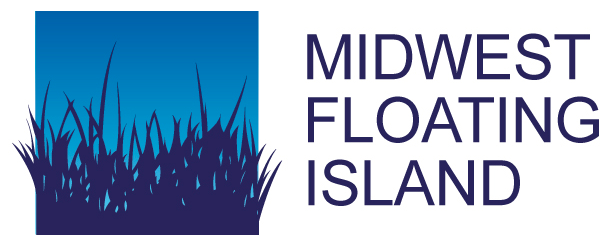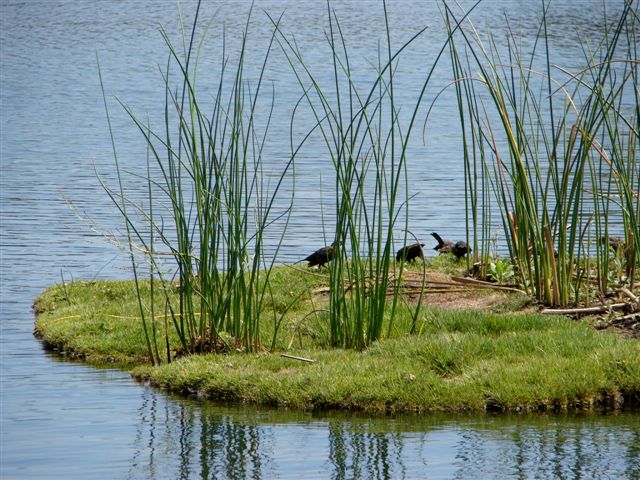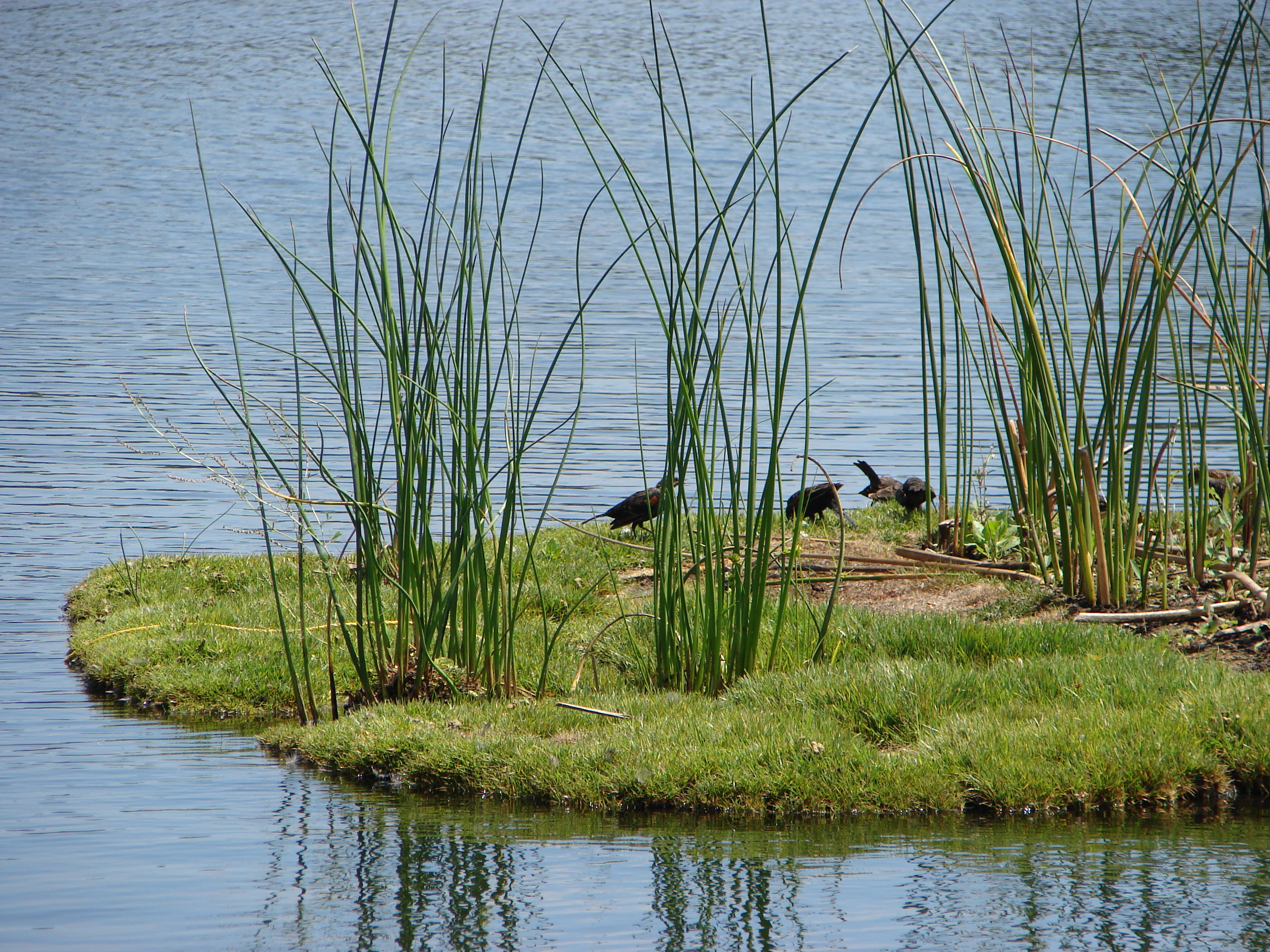Floating Islands can provide a wonderful option for habitat creation. Here are our top 7 reasons to use BioHavens for habitat:
1. Fish thrive under BioHaven islands with a rich food source.
The floating island creates a natural sanctuary for spawning with underwater protection. The roots that grow down below the island provide a useful hiding spot for fish. They also provide shade to cool the water for fish. In addition, many small fish at the bottom of the food chain eat the micro-organisms that develop on the roots. Once the biofilm has established itself, the food web surrounding the island will naturally grow in complexity until it eventually teems with a large diversity of organisms that reflect the local ecology.
2. Islands can have ramps or riparian edges for easy access for young bird, turtle, and frogs.
Some birds and animals can often find it difficult to lift themselves out of the water and onto a raised surface because of where their feet are in proportion to the main body. The riparian edges are sloped which allows for the animals to walk comfortably right onto the island such as our Loon Island. These floating wetlands function as prime real-estate because they automatically adjust to changing water levels.
3. The floating wetlands create a safe and comfortable habitat for nesting away from shoreline predators.
Many different species of wetland birds will often choose secluded areas to lay their eggs or raise their young. These islands can act as ideal nesting grounds for animals and birds seeking safer areas. The islands are anchored away from the shore to help provide protection from predators such as raccoons or coyotes. The plants will hide the babies from birds flying overhead. Small branches can also be put on the island to act as shelter in the form a tepee.
Floating islands are valued by The Royal Society for Protection of Birds in England and Scotland. It has over 300 man-made islands at its wetland reserves and finds that many bird species prefer islands to mainland areas with similar habitat features. These floating wetlands provide nesting and roosting secure from land-based predators. The islands are also created to concentrate birds in front of hides to provide visitors to reserves with good views without disturbing the birds.
4. Pollinators are attracted to the native plants and insects on the floating island.
The islands also can be planted with a variety of plants that will attract pollinators. Insects such as honey bees, wasps, bats, birds, or other small animals can act as pollinators.They will transfer pollen from the anthers of a flower to another flower. The pollinators will make the flowers thrive. Three-fourths of the world’s flowering plants depend on pollinators to reproduce. Current habitat loss, disease and environmental contaminants are causing a decline in many pollinators. The islands will provide a flourishing habitat for pollinators to grow their populations but the most rewarding part bay be the excited reaction when people see the dragonflies and butterflies on the island.
5. The floating constructed wetland is customize-able.
Another key feature provided by floating islands is that they can be customized. By implementing distinct plants in the islands
in order to mimic different environments, floating islands can be designed to be a customized habitat for specific organisms. Conversely, they can also be manufactured to be generally compatible with a wide range of animals. In this sense, BioHaven Floating Islands are ‘customizable ecosystems’- in principle, they can be designed to work for an arbitrarily large or small set of species. This is especially useful in areas that need to raise population levels of a specific animal but not others. Several examples include: overhead twigs for a loon island which provides protection, crushed rock for tern islands because it is their nesting habitat, sand boxes for turtle nesting, and splash pools for birds.

Launch day for island to create specialized habitat for endangered birds. Photo courtesy of Marek Landscaping.
6. BioHaven floating islands create cleaner water for all the animals.
Floating islands natural clean the water by removing nutrients and pollutants such as phosphorus, ammonia, and total suspended solids. Better water quality will create a healthier habitat for all the fish, aquatic invertebrates, birds, and wildlife.
7. Floating islands can create valuable rest stops for migrating song birds.
Twice a year, around five million birds, made up of about 250 species, migrate from the northern states to the south for the cold winter months. These migratory birds can cover thousands of miles each season. Many are nocturnal migrants, meaning they travel at night. As a result, when they are flying near buildings, the night-time city lights, especially on very tall buildings can confuse the birds. Sometimes they crash into buildings and other times the decorative holidays lights can disorient the birds and cause them to circle around for hours before finally settling down exhausted. Several cities have a lights-out policy during these migratory periods. Our islands can provide an excellent resting place in urban ponds for the tired birds on their long trek south. The native plants on the island will attract many birds. Native plants attract native insects which are the food source for 96% of songbirds.
Midwest Floating Island
www.MidwestFloatingIsland.com
info@midwestfloatingisland.com




6 Comments on “7 Reasons to Use BioHavenⓇ Floating Wetlands for Habitat”
I am fascinated by these floating islands. What a fantastic idea!!! We have six of these in Airdrie AB. I love to walk by them and see the birds relaxing and the progress on the islands. Nice work…
Today BioHaven floating islands are focussed on optimizing habitat for damsel and dragon flies. They are remarkable mosquito predators. Water clarity is a byproduct.
Have HOA here in Charlotte North Carolina that want to install floating wetland on our lake. Do you have info you can send on BioHaven mats to construct island.
I would like dimensions and prices. Plan to create habitat for waterfowl on the island. Need to have several perched or branches suitable for songbirds and wildlife photography.
Please email us at info@midwestfloatingisland.com and we can provide options. Islands for waterfowl are thicker than our standard islands.
interested in a floating island for 2 swans
mainly for protection from predators
possibly for nesting
interested in what aquatic plants to use
that swans would not destroy